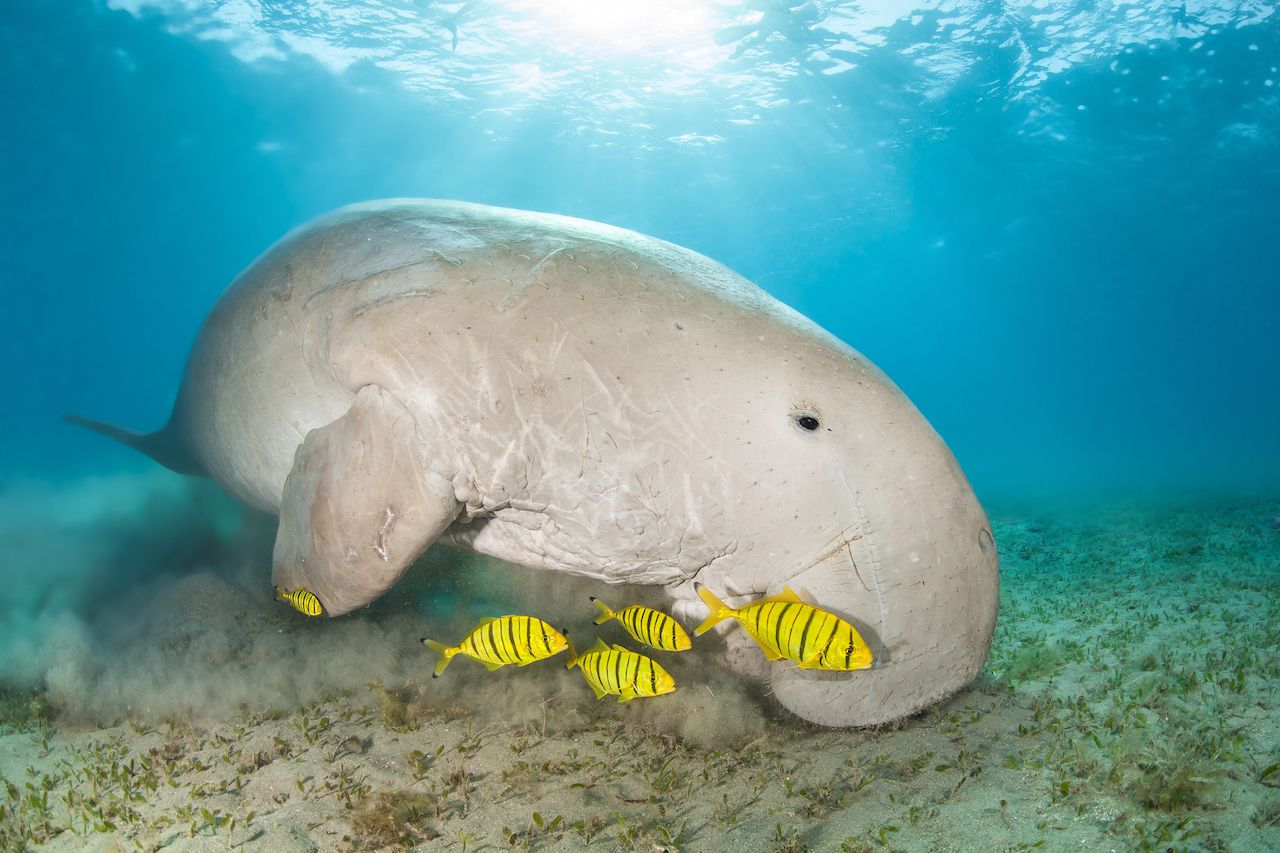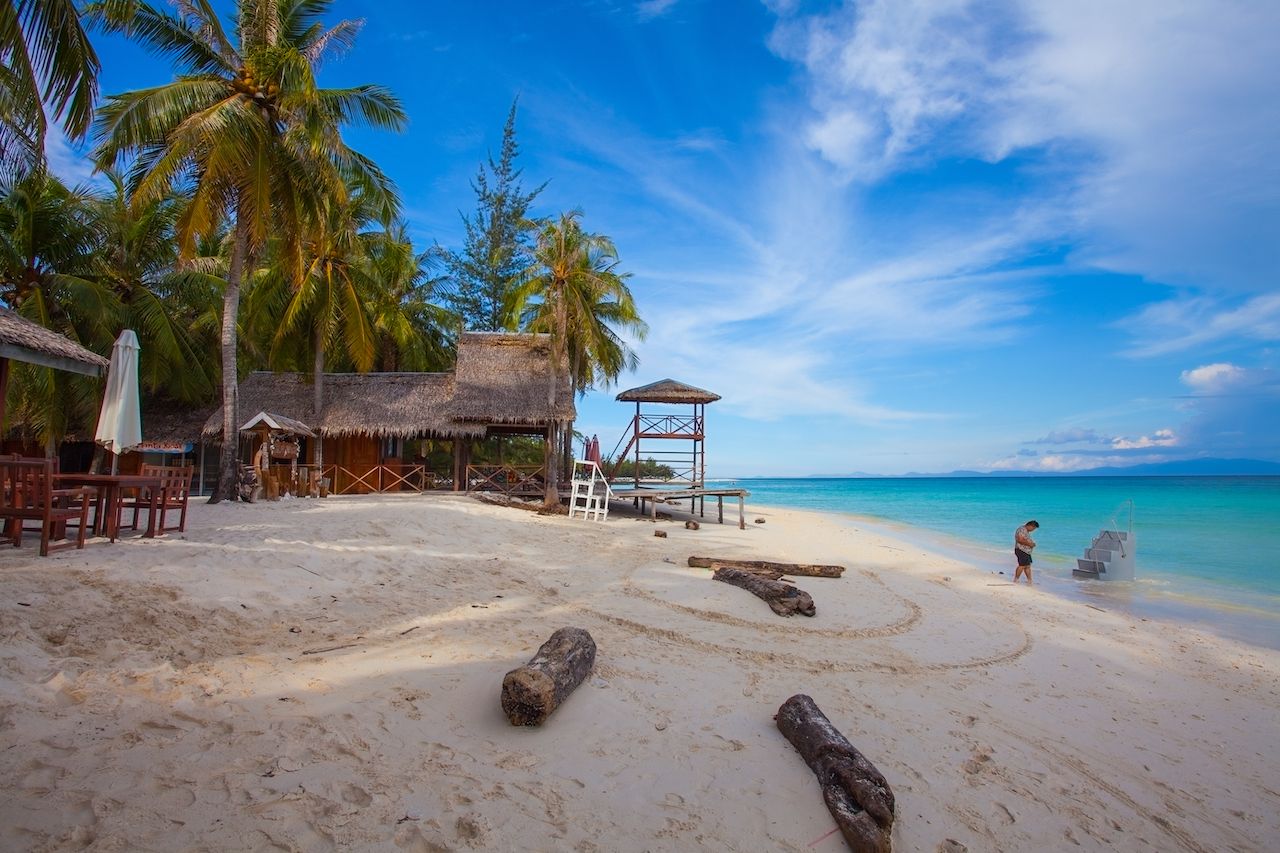Borneo, an island in the Malay Peninsula, is surrounded by many smaller, but equally beautiful, islands. Off the tip of Sabah, a Malaysian state in Borneo’s northeast, the Mantanani Islands are a local secret just two hours away from the state’s capital city of Kota Kinabalu. Mantanani is comprised of a cluster of three tiny islands — Pulau Mantanani Besar, Pulau Mantanani Kecil, and Pulau Lungisan — that are a diver’s paradise surrounded by coral reefs and sunken boats. Divers and non-divers alike will enjoy walking along white sand en route to turquoise waters with few other tourists around. If you’re visiting Southeast Asia, the Mantanani Islands are worth the stop, despite being out of the way of the region’s cultural highlights. Here’s how to make the trip happen.


Malaysia’s ‘Mermaid Island’ Is a Diver’s Paradise
How to get to the Mantanani Islands

Photo: Unai Huizi/Shutterstock
Most arrivals to Mantanani come from Kota Kinabalu. The journey from the capital city takes you by land for two hours through open countryside framed with the 13,455-foot Mount Kinabalu, Malaysia’s tallest peak, in the distance. You can either rent a car from the airport or arrange a tour package that includes transport and accommodation. It takes another 30 to 40 minutes in a speed boat from Kampung Kuala Abai jetty in Kota Belud before you reach Pulau Mantanani Besar, known as Mantanani Island, the only inhabited island in the cluster. In total, allow three hours for travel time. The ride can be rough even for seasoned travelers, as a warning.
The main island is an underwater dreamscape.

Photo: bernd.neeser/Shutterstock
Locally, the island is called “mermaid island” as there have been rare sightings of dugongs, of the same family as the manatee, that the locals used to think were mermaids. Divers can choose from more than 16 diving spots which include Japanese ships sunk during World War II. Visibility can reach up to 30 to 40 meters.
Divers are bound to find sea turtles, dolphins, blue-spotted rays, marbled stingrays, ribbon eels, blue-ringed octopuses, scorpionfish, imperial shrimp, and seahorses. You may need to move between the various diving spots to see them all, but that’s part of the fun here — everything is so close that there’s no reason to limit yourself to one dive per day. The island is also great for snorkeling with calm to mild seas. You can also opt to kayak across the waters or just laze on the beach. While the island is open to visitors year-round, April through July are the best months to head there to avoid the rainy season.
Stay in a sulap.

Photo: Lawrence_Chung/Shutterstock
A sulap, or hut in the native language of Kadazandusun, is one of the charming accommodations that will greet you in Mantanani. A sulap is a traditional style wooden hut built on stilts. Guests will need to climb wooden stairs to reach their rooms while the lower deck area is furnished with hammocks between stilts for an afternoon siesta. The island’s official tourism website has options for specific bookings, but expect your lodging to be somewhere between a hut and a hostel and very affordable.
Do note that the island’s electricity is generator operated and is only available between 6:00 AM and 6:00 PM. But before you let any worry kick in, remember that you’re on an island — put the phone down and go to the beach during the day. The activities here tend to revolve around the water. Even if you aren’t dive-certified, there will likely be others heading out to do some snorkeling or kayaking, or just plopping down on the beach with a book.
Or stay with the locals.

Photo: Laboo Studio/Shutterstock
While the island has a range of accommodation from hostels to resorts, visitors can also choose to stay with a local family in or around the villages. Mantanani is the home of the Bajau Laut, traditional fishermen and seafarers. Learn about their way of life and culture by living in a village homestay on a budget. The colorful wooden homes offer basic accommodation and a chance to experience village life. While English is not their first language, the hospitality of Sabahans will be an unforgettable experience.

Photo: Tanak Dusun/Shutterstock
For a bit more privacy, the Palm Beach Resort puts guests in private hut-like villas on the beach. If you’re lucky — meaning the clouds haven’t socked in your entire visit — you can watch the sun set into the flat horizon of the sea from a boat, no matter which lodging you choose. On clear-sky days, some of the accommodations offer a sunset ride to watch the sun sink into the ocean. Sunsets are extra remarkable in Sabah, so sit back and enjoy the view.